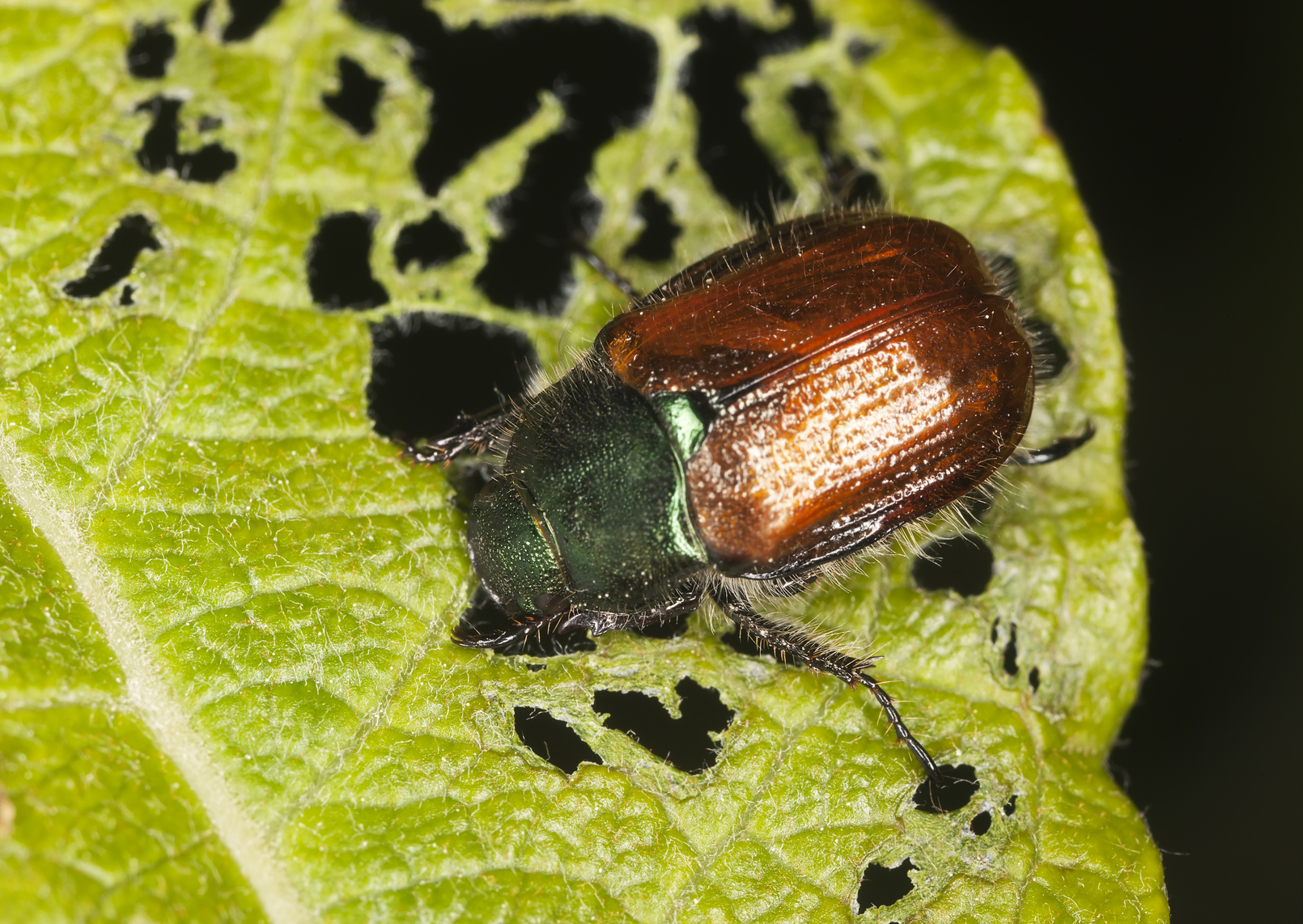General
The garden chafer (Phyllopertha horticola) is a beetle from the Scarabaeidae family. It does most of its damage in the larval stage when it feeds on roots of grasses and clover. The adults feed on the leaves of trees like oak, hazelnut and birch and on the flowers and developing fruits of, for instance, roses and cherries.
Life cycle and appearance of Garden chafer
The life cycle of the garden chafer (Phyllopertha horticola) has the following stages: egg, 3 larval instars, a pupal instar and the adult beetle.
Adult garden chafers (Phyllopertha horticola) have red-brown slightly hairy wings with a dark edge. The neck shield is metallic green to shiny black. In Central Europe, they emerge from the soil in May or June. Low swarming flights just above the soil surface are very characteristic for the garden chafer (Phyllopertha horticola). These flights are carried out by the males, who mate with females that stay close to the ground. Females start to deposit eggs into the soil at a depth up to 5 cm soon after mating. The eggs elongate at laying but in time become nearly spherical through water absorption. Chafer larvae (grubs) have brown heads and whitish bodies, and normally lie in a characteristic 'C-shaped' position. They possess three pairs of legs, of which the middle and hind pairs are approximately the same length. Pupation takes place around March or April. The pupae are cream-coloured to light brown.
Damage symptoms
The garden chafer (Phyllopertha horticola) does most of its damage in the larval stage when it feeds on the roots. First instar larvae mainly feed on small humus particles, second instar larvae on fine roots of grasses. Third instar larvae can also feed on bigger roots. After the roots have been destroyed the larvae move into corms, rhizomes and stem bases of plants.
Larvae can also feed above ground within stems of plants and on strawberry fruits lying on the ground. Both adult beetles and larvae are polyphagous and feed on a wide variety of plant species. High populations of larvae can destroy plants under field conditions. Established crops are more resistant to damage than young plants or recently planted cuttings. The beetles are only active at night, taking round bites out of the leaves, starting from the edge. This damage is usually not a problem in vegetables and fruit crops but reduces the value of ornamental plants.
